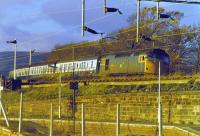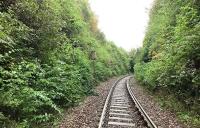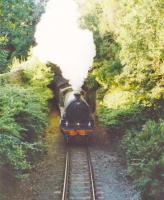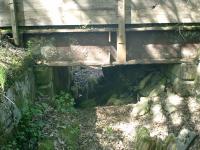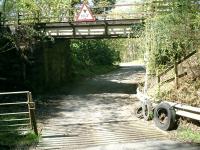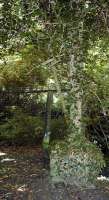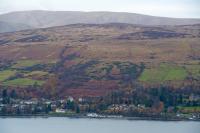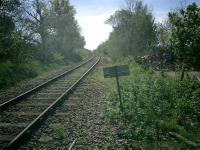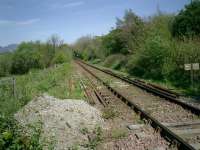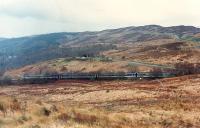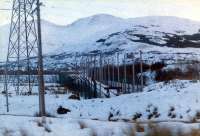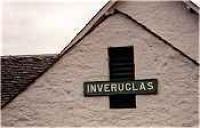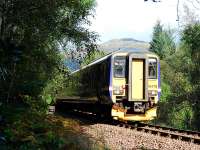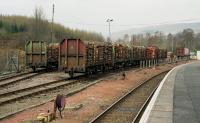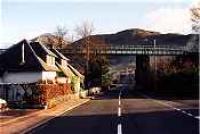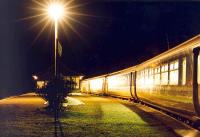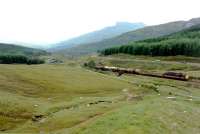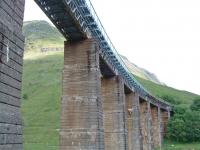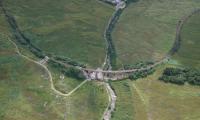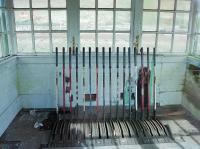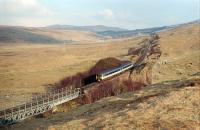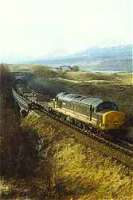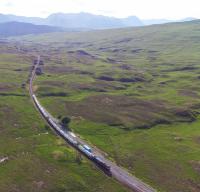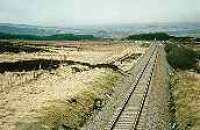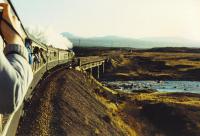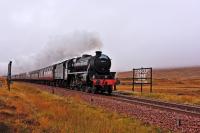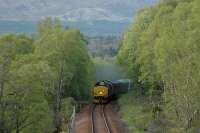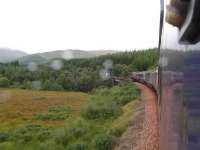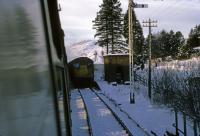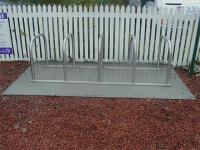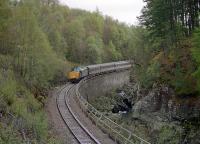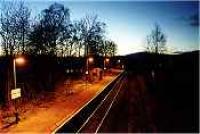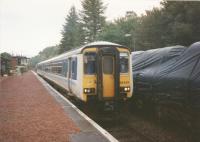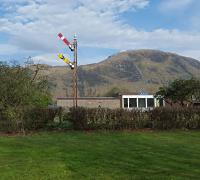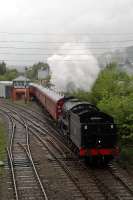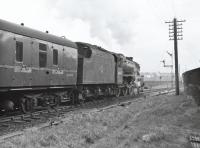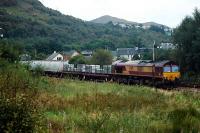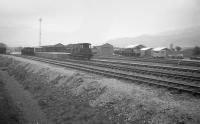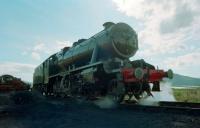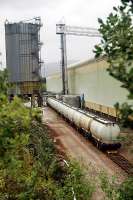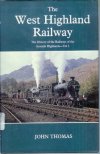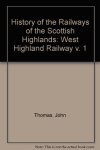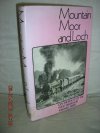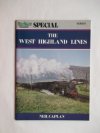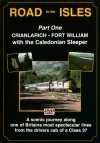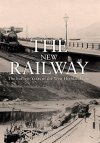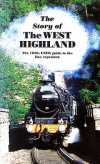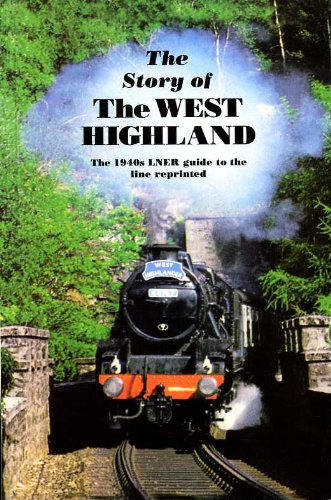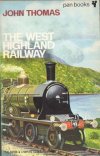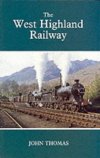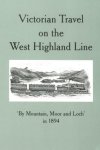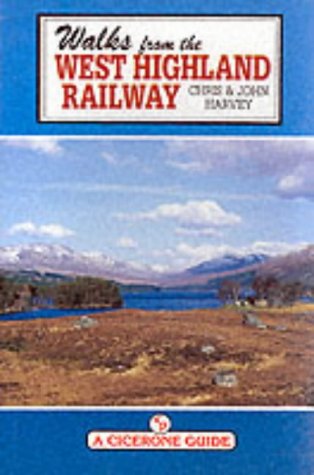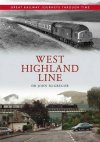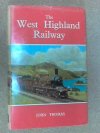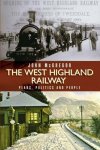West Highland Railway
Introduction
This railway runs from Craigendoran (near Glasgow) to Fort William. The line had a branch to Banavie Pier.
It is a single track railway running through superb scenery; by sea lochs, mountains and moorland.
The line is supported by the Friends of the West Highland Lines who were formed in 1983 and have promoted the line ever since. The society publishes the excellent West Highland News Plus.
Engineers: Forman and McCall.
Contractors: Lucas and Aird.
The line retains much of its atmosphere, a railway apart. On-train announcements are often more related to tourist information than train running information, particularly west of Fort William, and delivered with aplomb.
Architecture
Stations on the West Highland are noted for their 'Swiss Chalet' style station buildings and diminutive signal boxes. The wooden shingles on the outside of the buildings were imported from Switzerland. Original station buildings remain at Garelochhead, Upper Tyndrum, Bridge of Orchy, Rannoch, Tulloch, Spean Bridge and a closed station at Banavie Pier. Fort William's terminus had a building of a different style which has not survived. Most stations had island platforms, although some had two separate platforms; those at Rhu, Tulloch, Roy Bridge and Spean Bridge; and these had a different style of building, since only one side faced the platform. Stationmaster's cottages and other railway cottages also had a standardised pattern.
Dates
| /11/1882 | Glasgow and North Western Railway Glasgow and North Western Railway proposed, the Bill presented to Parliament to seek approval. The route was to have been a 167 mile long railway from Glasgow to Inverness via Fort William. Supported by the North British Railway and opposed by the Highland Railway, Caledonian Railway (part owners of the Callander and Oban Railway), Caledonian Canal, David MacBrayne and some landowners. The Bill was rejected in 1883. It was not built (a less ambitious variation of it, the West Highland Railway with an Act in 1889, did open). |
| / /1889 | West Highland Railway Fort William [Fort]'s wall breached for railway building. |
| 29/01/1889 | West Highland Railway Charles Forman (of engineers Forman & McCall), James Bulloch (Forman's chief engineer), J.E. Harrison (assistant engineer), Robert McAlpine (contractor), John Bett (factor of the Breadalbane Estates), Major Martin (factor of the Poltalloch estates) and N.B. MacKenzie (solicitor, local agent for the railway company) meet at a hotel in Spean Bridge to conduct a survey of the proposed route of the line over Rannoch Moor. |
| 30/01/1889 | West Highland Railway The party are taken by coach from Spean Bridge to Inverlair Lodge. The party set out to walk from Inverlair Lodge to the north end of Loch Treig. The party are rowed from the north end of Loch Treig to the south end and stay overnight at William Frederick Scarlett's (Lord Abinger) Craig-uaine-ach Lodge. |
| 31/01/1889 | West Highland Railway The party set out to walk to Rannoch Lodge, then the walkers change their minds and decide to continue to Inveroran. The party split in poor weather conditions as it darkens, Robert McAlpine decided to go on to Inveroran and James Bulloch heads to Gorton cottage. Bulloch reaches Gorton. Charles Forman, McKenzie, Martin, Harrison and Bett are taken to a nearby hut by shepherds from Gorton. |
| 01/02/1889 | West Highland Railway Robert McAlpine reaches a cottage by Loch Tulla. Charles Forman, McKenzie, Martin, Harrison and Bett are taken to Gorton to join Bulloch. The party are taken to Inveroran, via Loch Tulla to pick up Robert McAlpine. |
| 02/02/1889 | West Highland Railway A blizzard covers Rannoch Moor and the party have to work their way through deep drifting to reach Tyndrum [CandO] station on the Callander and Oban Railway. |
| 12/08/1889 | West Highland Railway Act passed and West Highland Railway authorised. Proposed by Charles Forman. |
| 23/10/1889 | West Highland Railway First sod cut by William Frederick Scarlett (Lord Abinger) near Fort William. |
| 20/07/1890 | West Highland Railway Banavie [1st] branch authorised. |
| / /1891 | Callander and Oban Railway Siding opened near Crianlarich [C&O] for construction of the West Highland Railway. |
| /07/1891 | West Highland Railway Runs out of money when the contractor requests further funds, and construction is abandoned. |
| /08/1891 | West Highland Railway In a court case held in Dumbarton the contractor is told that the line must be built for the amount specified in the contract. |
| 14/10/1891 | West Highland Railway Work re-starts, though the West Highland Railway agrees to pay an extra £10,000. |
| / /1893 | West Highland Railway Financial crisis; Mr James Hall Renton, a director of the line, used part of his personal fortune to get the line completed. |
| 05/09/1893 | West Highland Railway Last spike driven by Mr James Hall Renton on Rannoch Moor. |
| / /1894 | Glasgow, Dumbarton and Helensburgh Railway Craigendoran Pier Deviation West Highland Railway Craigendoran signal box closed and replaced by Craigendoran Junction signal box. |
| 31/07/1894 | West Highland Railway
Mallaig Extension (West Highland Railway) West Highland Railway (Mallaig Extension) Act passed. |
| 31/07/1894 | West Highland Railway Helensburgh Upper, Shandon, Garelochhead, Glen Douglas, Arrochar and Tarbet, Ardlui, Crianlarich, Tyndrum [WHR], Bridge of Orchy, Gorton, Rannoch, Corrour, Inverlair, Roy Bridge, Spean Bridge signal boxes opened. |
| 03/08/1894 | West Highland Railway Opened from Craigendoran Junction to Fort William [1st]. |
| 03/08/1894 | West Highland Railway Inspection by Board of Trade. |
| 06/08/1894 | West Highland Railway Banavie Junction [1st] signal box opened. (The Banavie [1st] branch was to open in 1895.) |
| 07/08/1894 | West Highland Railway Public opening from Fort William to Craigendoran. Stations opened at Craigendoran Upper, Helensburgh Upper, Row, Shandon, Garelochhead, Arrochar and Tarbet, Ardlui, Crianlarich, Tyndrum [WHR], Bridge of Orchy, Gortan (private), Rannoch, Corrour (private), Inverlair, Roy Bridge, Spean Bridge and Fort William [1st]. |
| 11/08/1894 | West Highland Railway Ceremonial opening. |
| 04/09/1894 | West Highland Railway Helensburgh to Garelochhead train de-railed at Woodend Level Crossing by a stone placed on the line. |
| 01/11/1894 | West Highland Railway Refreshment baskets available at Arrochar and Tarbet. |
| 20/12/1894 | Callander and Oban Railway Spur from Crianlarich station (West Highland Railway) to Crianlarich Junction [CandO] opened. New passing loop at Crianlarich Junction [CandO] allows removal of up platform and loop at Crianlarich [CandO] station. |
| 01/01/1895 | West Highland Railway Inverlair renamed Tulloch. |
| 27/05/1895 | West Highland Railway Glen Douglas siding opened. |
| 01/06/1895 | West Highland Railway Banavie [1st] branch opened. |
| /07/1895 | West Highland Railway Refreshment baskets available at Crianlarich [WHR]. |
| / /1896 | West Highland Railway
Mallaig Extension (West Highland Railway) West Highland Railway (Guarantee) Act passed, setting up the guarantee for the Mallaig extension. A second West Highland Railway Act then passed, specifying completion to Mallaig by 31/07/1902. |
| 01/05/1896 | West Highland Railway Whistlefield opened. |
| 06/05/1896 | West Highland Railway Derailment at Banavie Junction [1st] (now Fort William Junction). |
| /08/1896 | West Highland Railway West Highland Railway (Ballachulish Extension Act) passed, but not built. A bridge over Loch Leven and tramways were not approved. |
| / /1897 | West Highland Railway
North British Railway The proposed Bill by the West Highland Railway and North British Railway for extension of the West Highland to Inverness is rejected by the Commons. (The Highland Railway's route via Carrbridge was partly open and would be completed in 1989.) |
| 21/01/1897 | West Highland Railway
Mallaig Extension (West Highland Railway) First sod of Mallaig Extension (West Highland Railway) cut at Corpach by Lady Margaret Cameron of Lochiel. |
| 20/12/1897 | West Highland Railway Connection to Callander and Oban Railway at Crianlarich, from Crianlarich Junction to Crianlarich Junction [CandO]. |
| / /1901 | West Highland Railway Invergarry and Fort Augustus Railway Original signal box at Spean Bridge closed and replaced along with the opening of a junction signal box, a subsidiary to the main box. |
| 30/03/1901 | West Highland Railway Mallaig Extension (West Highland Railway) Banavie Junction [2nd], Banavie Canal Bridge, Tomonie Signal Box, Glenfinnan, Lochailort, Arisaig, Mallaig signal boxes opened. Banavie Junction [1st] signal box and junction renamed Mallaig Junction. |
| 01/04/1901 | Mallaig Extension (West Highland Railway) Line opened from Banavie (Banavie Junction [2nd]), over the Caledonian Canal and on through Banavie, Corpach, Locheilside, Glenfinnan, Lochailort, Beasdale, Arisaig and Morar to Mallaig, extending the West Highland Railway to the western seaboard. There was no official opening ceremony. |
| 22/07/1901 | West Highland Railway Sleeper cars from Kings Cross to Fort William commence. |
| 08/08/1906 | West Highland Railway Accident at Pulpit Rock, by Loch Lomond. |
| 31/12/1908 | North British Railway
West Highland Railway
Mallaig Extension (West Highland Railway) North British Railway formally takes over the West Highland Railway line from Craigendoran to Fort William [1st], Mallaig and the branch to Banavie [1st]. |
| 06/12/1909 | West Highland Railway Accident at Glen Douglas. |
| 20/09/1921 | West Highland Railway Invergarry and Fort Augustus Railway Spean Bridge junction signal box closed, junction rationalised. |
| 04/11/1921 | West Highland Railway Mallaig Extension (West Highland Railway) Banavie Junction [2nd] signal box closed, replaced by a ground frame. |
| 01/06/1924 | West Highland Railway Row renamed Rhu. |
| 01/05/1926 | West Highland Railway Gortan renamed Gorton. |
| /05/1927 | West Highland Railway Invergarry and Fort Augustus Railway Mallaig Extension (West Highland Railway) All three lines closed during gales. |
| 08/07/1929 | West Highland Railway Restaurant car introduced. |
| /10/1929 | West Highland Railway Sleepers start to operate all year round. |
| 27/01/1931 | West Highland Railway Derailment in Rannoch Moor. |
| 06/07/1931 | West Highland Railway A loop added at Rhu. |
| 01/08/1931 | West Highland Railway Fersit Halt and branch opened, Loch Treig was to be converted into a reservoir to serve the smelter at Fort William. |
| 07/08/1932 | West Highland Railway Loch Treig Tunnel and diversion opened. The line was re-aligned at a higher level as the Loch became a reservoir, part of the Lochaber Aluminium Works scheme. |
| 15/09/1934 | West Highland Railway Corrour opened to the public having been a private halt. |
| 01/01/1935 | West Highland Railway Fersit Halt closed. |
| 02/05/1937 | West Highland Railway Craigendoran West signal box at Craigendoran Upper closed. |
| 02/09/1939 | West Highland Railway Banavie Pier to Fort William (Banavie Junction [2nd]) closed to passengers. By closure the service was meagre - a service from Fort William [1st] on Mondays, Wednesdays and Fridays and a reverse working on Tuesday, Thursdays and Saturdays. Banavie Junction [2nd] to Mallaig Junction remains open to passengers as part of the Mallaig Extension (West Highland Railway). |
| 02/10/1939 | West Highland Railway Sleeper withdrawn. |
| 27/04/1941 | West Highland Railway Military Port Number 1 Railway Faslane Junction junction and signal box opened with a loop on the main line, double track junction and exchange sidings for the railway to Military Port No 1, Faslane Military Port. |
| 21/12/1941 | West Highland Railway New signal box and longer loop opened at Helensburgh Upper to help with Faslane Military Port traffic. |
| 26/03/1943 | West Highland Railway Corpach Naval Sidings, Annat Sidings, opened. These served the Corpach Naval Base. |
| 05/04/1944 | West Highland Railway Restaurant cars withdrawn. |
| 26/08/1945 | West Highland Railway Faslane Platform opened, for moving prisoners of war to the halts at Inveruglas and Glen Falloch Platform in connection with the building of the Loch Sloy Hydro Electric scheme, Loch Sloy Power Station. |
| 29/10/1945 | West Highland Railway Inveruglas, signal box and loop opened. |
| 10/04/1946 | West Highland Railway Glen Falloch Platform opened. (Alternative date.) |
| 14/04/1946 | West Highland Railway Invergarry and Fort Augustus Railway Spean Bridge signal box closed and temporary box opened. |
| /06/1946 | West Highland Railway Restaurant cars re-start. |
| 23/05/1949 | West Highland Railway Passenger services between Glasgow Queen Street High Level, Crianlarich [WHR] and Oban start. |
| 28/08/1949 | West Highland Railway New Spean Bridge signal box replaces temporary box. |
| 04/06/1950 | West Highland Railway Rhu signal box closed. |
| 06/08/1951 | West Highland Railway Banavie Pier to Fort William (Banavie Junction [2nd]) (excluded) closed to goods and completely. Banavie Junction [2nd] to Mallaig Junction remains open to passengers as part of the Mallaig Extension (West Highland Railway). |
| 20/09/1953 | West Highland Railway Military Port Number 1 Railway Faslane Junction signal box closed replaced by a ground frame. |
| 17/04/1954 | West Highland Railway Collision at Bridge of Orchy. |
| / /1955 | West Highland Railway British Aluminium Co Ltd erects the Inverlochy Footbridge, roughly where the temporary line of the Lochaber Narrow Gauge Railway passed over the Mallaig line, in order to link housing at Inverlochy to the Aluminium Smelter. |
| 09/01/1956 | West Highland Railway Rhu closed. |
| 24/09/1956 | West Highland Railway Television train runs. |
| 28/03/1960 | Glasgow, Dumbarton and Helensburgh Railway Craigendoran Pier Deviation West Highland Railway Craigendoran East signal box closed, control passed to Craigendoran Junction signal box renamed Craigendoran. |
| 04/04/1960 | West Highland Railway Rhu re-opened. |
| 30/03/1962 | West Highland Railway Fire destroys the station building at Crianlarich [WHR]. The tearoom building and Crianlarich Shed survive. |
| / /1963 | West Highland Railway
Mallaig Extension (West Highland Railway) British Railways and Scottish Pulp (Developments) Ltd agree a 22 year plan for a new Scottish Pulp and Paper Mills to receive raw materials and dispatch paper by rail. |
| 14/06/1964 | West Highland Railway Craigendoran (West Highland, high level), Rhu, Shandon, Whistlefield and Glen Douglas closed as the local service from Craigendoran to Arrochar and Tarbet is withdrawn. |
| 06/12/1964 | West Highland Railway Roy Bridge signal box closed and loop removed. |
| / /1965 | West Highland Railway
Mallaig Extension (West Highland Railway) Fish carrying vans withdrawn. |
| / /1966 | West Highland Railway
Mallaig Extension (West Highland Railway) The Scottish Pulp and Paper Mills open at Corpach leading to a great increase in traffic for the line at a time when it is under threat. |
| 26/02/1967 | Callander and Oban Railway West Highland Railway Crianlarich West and Crianlarich East signal boxes at Crianlarich Lower Junction closed, replaced by a ground frame. |
| 02/04/1967 | West Highland Railway Shandon signal box closed and loop taken out. |
| 16/07/1967 | West Highland Railway Switching out provided at Tyndrum Upper signal box. |
| 13/08/1967 | West Highland Railway Switching out provided at Bridge of Orchy,, Gorton signal boxes. |
| 21/07/1968 | West Highland Railway Glasgow bound track at Helensburgh Upper lifted and signal box closed. |
| 04/08/1968 | West Highland Railway Gorton signal box closed and loop taken out. |
| 13/06/1975 | West Highland Railway New Fort William station opened, old station Fort William [1st], by the pier, closed. |
| / /1980 | West Highland Railway Military Port Number 1 Railway Faslane Junction ground frame and junction taken out about this date. |
| 09/06/1980 | West Highland Railway
Mallaig Extension (West Highland Railway) Final timber train leaves Crianlarich Lower for the Scottish Pulp and Paper Mills, Corpach. |
| /10/1980 | West Highland Railway
Mallaig Extension (West Highland Railway) As the Pulp Mill at Scottish Pulp and Paper Mills, Corpach, closes much traffic is lost. |
| 02/08/1981 | West Highland Railway
Callander and Oban Railway A Class 55 'Deltic' visits Oban for the first time (55021 'Argyll and Sutherland Highlander') on a 'Merrymaker' excursion from Edinburgh Waverley to Oban. |
| 23/08/1981 | West Highland Railway
Callander and Oban Railway Second visit of 'Deltic' 55021 to Oban on a 'Merrymaker' excursion from Edinburgh Waverley. |
| / /1983 | West Highland Railway Sunday service introduced. |
| /01/1983 | Edinburgh and Glasgow Railway West Highland Terrier Dog symbol adopted for the depot, with the logo being applied to locomotives (particularly appropriate for the Class 37s on the West Highland Railway). |
| / /1984 | West Highland Railway Steam trains return to the line. |
| 10/08/1985 | West Highland Railway Switching out removed from Tyndrum Upper, Bridge of Orchy signal boxes. |
| /11/1985 | West Highland Railway Corrour signal box closed. |
| 03/11/1985 | West Highland Railway Rannoch signal box closed. |
| 08/12/1985 | West Highland Railway Crianlarich signal box closed. |
| 22/12/1985 | West Highland Railway Tyndrum Upper signal box closed. |
| 12/01/1986 | West Highland Railway Ardlui signal box closed. |
| 19/01/1986 | West Highland Railway Arrochar and Tarbet signal box closed. |
| 26/01/1986 | West Highland Railway Glen Douglas signal box closed. |
| 02/02/1986 | West Highland Railway Garelochhead signal box closed. |
| 23/02/1986 | West Highland Railway Tulloch signal box closed. |
| 02/03/1986 | West Highland Railway Spean Bridge signal box closed. |
| / /1987 | West Highland Railway Tulloch station building falls out of use with the introduction of RETB. |
| 14/06/1987 | West Highland Railway Mallaig Extension (West Highland Railway) New RETB signalling centre opened at Banavie - the first step is to take over operation of the Banavie Swing Bridge as a swing bridge and gate box. Banavie signal box closed. |
| 06/12/1987 | West Highland Railway Mallaig Extension (West Highland Railway) RETB, based at the signalling centre at Banavie, comes into operation. Takes over Glenfinnan, Arisaig. Annat Signal Box reduced to gate box. |
| 27/03/1988 | West Highland Railway Garelochhead, Glen Douglas, Arrochar and Tarbet, Ardlui, Crianlarich block posts eliminated by RETB. |
| 08/05/1988 | West Highland Railway Corrour block post can be switched out. |
| 08/05/1988 | West Highland Railway Spean Bridge block post can be switched out. |
| 19/05/1988 | West Highland Railway Mallaig Extension (West Highland Railway) Banavie RETB Signalling Centre formally opened by David Mitchell, Minister for Transport. |
| 29/05/1988 | West Highland Railway Tyndrum Upper, Bridge of Orchy, Rannoch, Corrour, Tulloch, Spean Bridge block posts eliminated by RETB. |
| 23/01/1989 | West Highland Railway
Mallaig Extension (West Highland Railway) Class 156 'Sprinters' introduced, replacing Class 37/4 hauled rolling stock. |
| 14/05/1990 | West Highland Railway Motorail service commences running to Fort William. |
| 28/05/1995 | West Highland Railway Motorail service withdrawn. |
| /08/1997 | West Highland Railway Summit board sign at Corrour Summit replaced. |
| 06/06/1998 | West Highland Railway Tulloch station building opened, after renovation at a cost of £200,000, as a bunkhouse. |
| 30/07/1998 | West Highland Railway Derailment at Crianlarich. |
| 28/10/1999 | West Highland Railway Derailment at Corrour. |
| /11/1999 | West Highland Railway Railtrack begins £100,000 renovation of Garelochhead, to be repainted and rotten floors replaced. |
| 02/07/2000 | West Highland Railway Class 66s cleared for the West Highland Railway. |
| 23/07/2001 | West Highland Railway New accommodation and restaurant building at Corrour station closes. |
| 24/09/2001 | West Highland Railway Heating and gas oil traffic from Grangemouth New Oil Terminal to Fort William Oil Sidings restarts (having ceased in the 1980s). |
| 26/09/2001 | West Highland Railway Fort William Oil Sidings re-opened. |
| 10/11/2001 | West Highland Railway The northbound sleeper suffers a four and a half hour delay when slippage stopped the train at Craigendoran Upper. An additional 37 was sent from Motherwell to assist. |
| / /2002 | West Highland Railway Former London Marylebone turntable installed at Fort William Junction Yard. |
| /06/2002 | West Highland Railway Bridge of Orchy station building renovated. |
| / /2005 | West Highland Railway
Mallaig Extension (West Highland Railway) Paper mill at the Scottish Pulp and Paper Mills closes, 135 jobs lost. |
| 08/01/2005 | West Highland Railway Closed between Roy Bridge and Tulloch due to floodwaters rising in Monessie Gorge. |
| 05/03/2005 | West Highland Railway
Mallaig Extension (West Highland Railway) Class 50s reach Mallaig on a Pathfinders tour for the first time (50031 Hood and 50049 Defiance). Arrived Fort William on the 4th, Mallaig on the 5th (having to run to Arisaig and back to pass a Sprinter due to its length before the return journey) and to Dundee from Fort William on the 6th. |
| 15/09/2005 | West Highland Railway David Bellamy opens visitors centre at Rannoch station. |
| 21/12/2005 | West Highland Railway English, Welsh and Scottish Railway restarts carrying ingots south from the Lochaber Smelter. (These had been swapped from rail to road by Freightliner who lost the traffic.) |
| /06/2006 | West Highland Railway Caledonian Sleeper haulage changes from Class 37s to Class 67s. |
| /10/2007 | West Highland Railway British Aluminium is asked to repair the Inverlochy Footbridge. |
| /05/2008 | West Highland Railway UPM Tilhill and CSP Forestry are awarded a £250,000 Freight Facilities Grant to assist with the movement of 120,000 tonnes of timber by Colas from Rannoch to the Caledonian Paper Mill, near Barassie and Irvine, over eight years. A lineside loading pad is to be built by Tilhill. |
| /02/2010 | West Highland Railway GB Railfreight wins three year contract to move alumina from North Blyth to the Lochaber Smelter, Fort William. |
| 26/02/2010 | West Highland Railway Avalanches block the line between Upper Tyndrum and Bridge of Orchy. (Re-opened on 8th of March.) |
| /04/2010 | West Highland Railway Historic Scotland issues a formal notice to stop the demolition of Spean Bridge signal box. |
| 28/06/2012 | West Highland Railway GBRf 66734 'The Eco Express' on a loaded northbound train for the Lochaber Smelter derails alongside Loch Treig following a landslip on 28 June. Tank wagons were removed relatively easily to Corrour but the locomotive was cut up on site. |
| / /2016 | West Highland Railway Caledonian Sleeper haulage changes from Class 67s to Class 73s. |
| / /2016 | West Highland Railway Corrour signal box renovated. |
| /10/2019 | ScotRail Work begins to convert Class 153s, leased from Angel Trains, for carrying bicycles on the West Highland Railway (for Oban services). The work was undertaken by Brodie Engineering, Kilmarnock. The Class 153s are coupled with Class 156s. |
| 04/03/2020 | West Highland Railway A Class 55 'Deltic' visits Fort William for the first time (55019 'Royal Highland Fusilier') on a tour from Cardiff. |
| 07/03/2020 | West Highland Railway
Callander and Oban Railway Caledonian Sleeper temporarily diverted to Oban due to flooding at Monessie Gorge. |
| 14/07/2020 | West Highland Railway Caledonian Sleeper re-starts after pause due to COVID-19. |
Route described
The West Highland is a line apart. Despite fears over the years that it will lose its identity, it retains a certain something - probably a reflection of how different the West Highlands are from the rest of Scotland. Grander, sheerer mountains, sea and inland lochs, islands ...
The line is 99 miles long from Craigendoran Junction, itself 23 miles from Glasgow.
Portions of line and locations
This line is divided into a number of portions.
Craigendoran to Fort William
This was the main line of the original line running from Craigendoran Junction to Fort William [1st].
The pier platform lines met the Helensburgh line east of Craigendoran station. This was remodelled in 1894 into a junction proper when the West Highland Railway opened. This was a double track junction, the West Highland becoming single track north of Craigendoran Upper station.
...
See also
Glasgow, Dumbarton and Helensburgh Railway
Craigendoran Pier Deviation

John McIntyre 02/07/2021
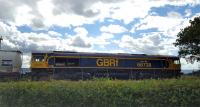
Beth Crawford 09/08/2018
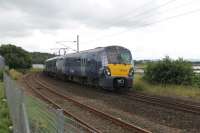
Mark Bartlett 30/07/2017
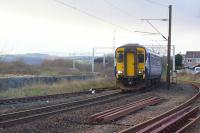
John McIntyre 27/01/2022
This was an island platform station of the West Highland Railway Swiss chalet style directly alongside the station on the Helensburgh line and pier station. The West Highland joins the Helensburgh line just to the east of the station at Craigendoran Junction.
...
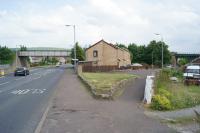
John McIntyre 02/07/2021
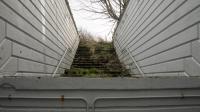
Ewan Crawford 08/02/2019
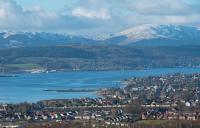
Ewan Crawford 02/02/2018
The west box was a tall structure, which was described as looking like a pagoda - a six sided building approached by a walkway from the West Highland Railway trackbed. It controlled the northern approach to the West Highland Craigendoran station. The box was closed in 1937 when Craigendoran Junction box took over.
...
A set of sidings above Craigendoran Junction approached from the junction were associated with the construction of the West Highland Railway. Lucas and Aird's Depot.
...
This goods yard, a simple single siding with a loading bank approached from the west, was immediately east of Helensburgh Upper. A typical West Highland railway cottage stands to the north of the site. ...
More detailsThis station is open. It is located in the north of Helensburgh, up above the town centre (better served by Helensburgh Central).
...
See also
Military Port Number 1 Railway
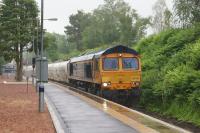
John McIntyre 24/06/2021
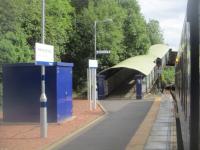
David Bosher 07/09/2022
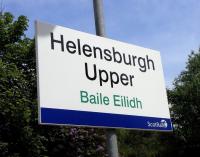
David Panton 02/06/2009
This level crossing is west of Helensburgh Upper. The farm was to the south, this crossing giving access to the farmland to the north of the line.
...
This level crossing with Glenoran Road is east of Rhu. It gives to Ardencaple Farm from the south, and access from the farm to farmland to the south. A former crossing keeper's cottage is on the north side of the line, east of the crossing - it was added after the line's opening.
...
This was a two platform station, more typical of the stations on the northern section of the line. The main station building was on the west/northbound platform. To its west was the footbridge connecting to the eastbound platform with the taller than usual signal box.
...
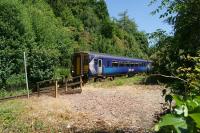
John McIntyre 01/07/2021
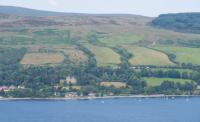
Ewan Crawford 25/07/2019

Ewan Crawford 08/11/2018
This junction was installed in the Second World War. It was a double track junction as a long loop was put in on the West Highland Railway and the connection to the Military Port Number 1 Railway yard was double track. Faslane Junction Yard was just to the north on the branch.
...
See also
Military Port Number 1 Railway
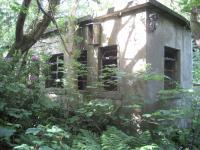
John McIntyre 28/05/2007
This was a single platform halt. It was built in connection with the nearby Faslane Military Port. The halt was also used to facilitate the transport prisoners of war to Inveruglas which was a halt for the Loch Sloy Hydroscheme (construction of Inveruglas Power Station and Loch Sloy Dam). There was a hutted encampment of Nissen Huts at the Stuckenduff Farm by the halt. A train for ...
More details
Ewan Crawford 25/05/2006
This was an island platform station in the typical West Highland Swiss Chalet style, passenger access was by subway (north end, entry from by the railway cottage). There was a loading bank siding on the east side of the line, served from the Helensburgh direction. The signal box was on the platform, at its south end. The tablet instruments were in the station building.
...
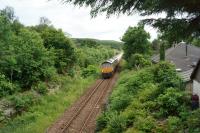
John McIntyre 06/07/2021
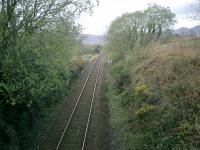
Alistair MacKenzie 17/04/2007
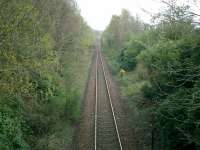
Alistair MacKenzie 17/04/2007
This level crossing is just off the A814 above Faslane. It gives access to High Balernock Farm, off to the east. The location is used as an access point by railway maintenance teams.
...
This is an island platform station with an original West Highland Railway chalet-style building and signal box ('B' listed, closed 1986). A parcels building and short platform (both demolished 2017) were on the west side of the station. Access to the station is by means of a subway. The ironmongery typical of West Highland station subways remains intact - fencing round the pit of the subway ...
More details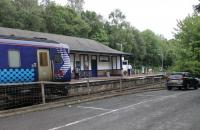
Mark Bartlett 01/06/2017
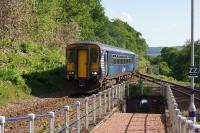
John McIntyre 18/06/2021

Mark Bartlett 01/08/2017
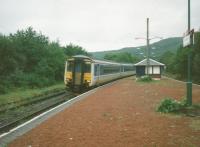
David Panton 21/07/1997
This three span single track lattice girder viaduct is between Garelochhead (to the south) and the former Whistlefield (to the north) stations.
...
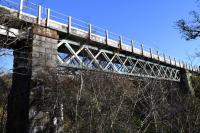
Ewan Crawford 16/11/2022
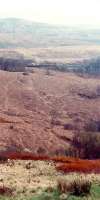
Ewan Crawford //1990
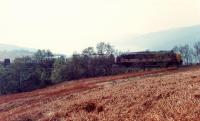
Ewan Crawford //1990
This was a single platform station with a station building different to others on the line designed by James Miller, more akin to those on the Callander and Oban Railway. It was an unsuitable location for a station with a cramped location and the line on a gradient.
...
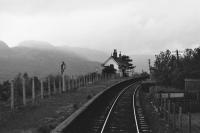
Brian Haslehust 14/06/1964
This is a three girder viaduct carrying a single track over the Allt Darach. The viaduct is above Finnart Oil Terminal on Loch Long. ...
More details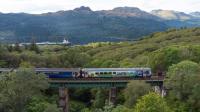
Ewan Crawford 01/09/2022
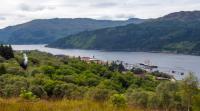
Ewan Crawford 20/08/2018
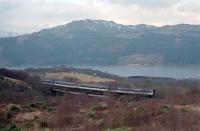
Ewan Crawford //1991
This summit is south of the former Glen Douglas station loop. It is a summit of 564 ft where, going north, the line crosses from Gleann Culanach to the west end of Glen Douglas before the long run downhill to Arrochar.
...
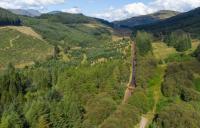
Ewan Crawford 01/09/2022
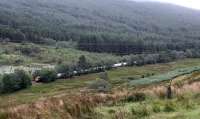
Ewan Crawford 16/08/2014
This was a halt on the West Highland Railway, opening one year after the line opened. For many years it was private. The loop remains here but the platform and building have been removed. The island platform was to the north of the signal box. There was a signal box and building such as those found at Corrour and, formerly, Gorton [WHR]. The building was, as a the others, on the far side ...
More details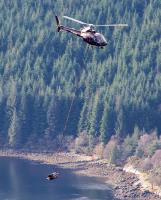
Ewan Crawford 04/11/2022
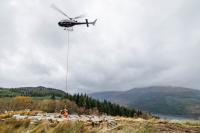
Network Rail //2022
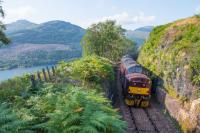
Ewan Crawford 26/07/2021

Ewan Crawford 16/01/2023
This government munitions depot is located in Glen Douglas. It is rail served and a private road connects it to Glen Mallan Jetty.
...
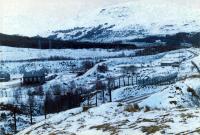
Ewan Crawford //
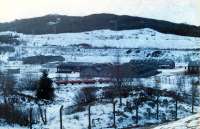
Ewan Crawford //
This railway cottage was between Glen Douglas Halt and Arrochar and Tarbet station. It was located on the west side of the line. Down below, to the south west, was the small settlement of High Morlaggan. The hillside on the west side of the line drops down to Loch Long. On the east side there are cliffs.
...
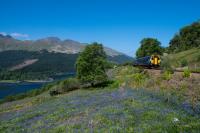
Ewan Crawford 25/05/2023
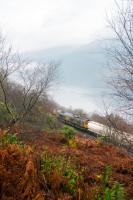
Ewan Crawford 02/12/2022
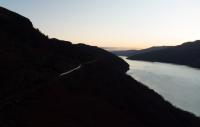
Ewan Crawford 06/12/2022
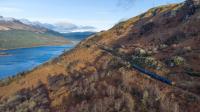
Ewan Crawford 16/01/2023
This single track girder viaduct of three spans crosses the An t-Sreang. The viaduct is above the Tighness in the south of Arrochar.
...

Ewan Crawford 02/12/2022
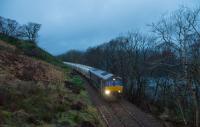
Ewan Crawford 05/01/2023
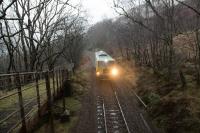
Ewan Crawford 05/01/2023

Ewan Crawford 04/02/2020
This is an island platform station, typical of the West Highland Railway. The station building was removed in the late 1990s/early 2000s after several years of being vacant. This was of the Swiss chalet style typical of the line. Access is via a subway and this also gives access to the hillside to the west.
...
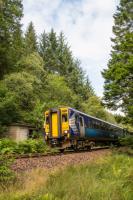
Ewan Crawford 19/08/2021

Ewan Crawford 24/08/2013
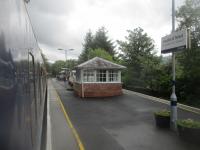
David Bosher 07/09/2022
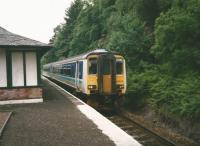
David Panton 17/06/1996
This girder viaduct, a little south of the former wartime hydroscheme construction Inveruglas station, crosses over the Inveruglas Water. It will be familiar to many road users as there is a very sharp bend on the neighbouring A82 with a brief view of the viaduct off to the left.
...
This was a one platform workman's halt, with the platform on the east side of a passing loop. The West Highland Railway is still open but there is no station here today. The site was on the west side of Loch Lomond north of the Inveruglas Water and just west of Upper Inveruglas farm. There were three sidings in the yard with a loading bank, approached from the north, on the west side. This ...
More details
Ewan Crawford 10/08/2021
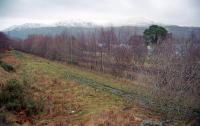
Ewan Crawford //1993
This is an 8 arch castellated single track 396 ft long viaduct on the west side of Loch Lomond. It is 58 ft high.
...
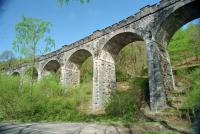
Ewan Crawford //1992
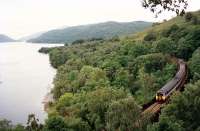
Ewan Crawford //1990
This was the only tunnel on the main line of the West Highland Railway. It is 147 ft long and located just north of the Craigenarden Viaduct.
...
This is an island platform station, typical of the West Highland line. The station is near the north end of Loch Lomond. The station building was demolished due to subsidence but was of the 'Swiss chalet' style typical of the line. Before demolition the building had developed a distinct lean to the east. Access is via a subway from the east (road) side. The signal box (closed 1986) remains in ...
More details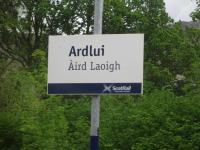
Gordon Steel 24/05/2016
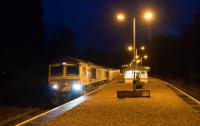
Ewan Crawford 22/11/2022
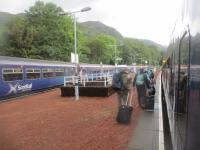
David Bosher 07/09/2022
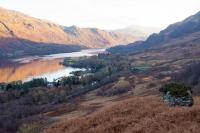
Ewan Crawford 22/11/2022
This was a single platform halt. Traces of the foundations of the platform remain. It was located south of Glen Falloch Viaduct. The halt was associated with the building of the Loch Sloy hydro scheme and it was served by unadvertised trains from Faslane Platform serving stations north such as the private Inveruglas (where Loch Sloy Power Station was built) and picking up ...
More details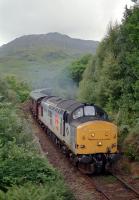
Ewan Crawford //1991
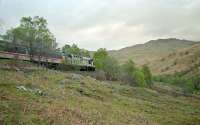
Ewan Crawford //1995
This is a 426 ft 7 span single track lattice girder viaduct crossing the Dubh Eas, 144ft below (see trivia, right). The viaduct is on a curve. It is located between Ardlui and Crianlarich.
...

Ewan Crawford //1991
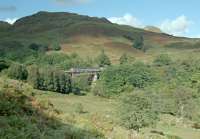
Ewan Crawford 26/09/1991
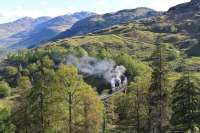
John Gray 14/05/2014

Ewan Crawford 28/09/1991
This single track girder viaduct crosses the Eas Eonan.
...
This is an island platform station on the West Highland Railway where the lines to Oban (to the west) and Fort William divide. It is famous for its tearoom. Crianlarich Station Tearoom . The station is in Perthshire. Entry is by a subway at the north end of the station. The former signal box (closed 1985) is also at the north end of the ...
More details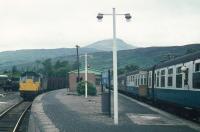
Brian Haslehust //1969

David Panton 17/05/1998

David Pesterfield 26/06/2013
This junction is immediately north of Crianlarich station. Here the the lines to Oban and Fort William separate. The junction faces south. Just to the north, on the Fort William route, is the Glenbruar Viaduct.
...
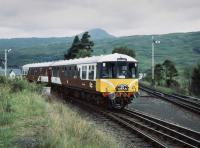
Bill Roberton //1985
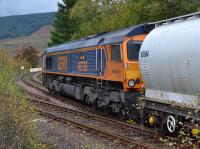
Bill Roberton 19/10/2017
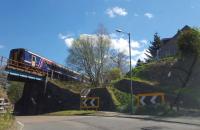
Beth Crawford 05/05/2017
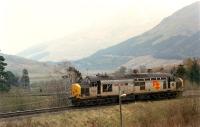
Ewan Crawford //1990
This single track girder viaduct is just north of Crianlarich station and Crianlarich Junction where the lines to Oban and Fort William divide. Just to the north is the Fillan Viaduct.
...
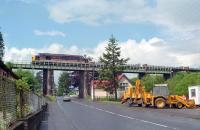
Ewan Crawford //1990
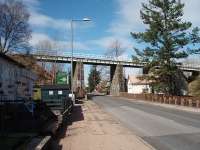
Mark Bartlett 29/03/2009
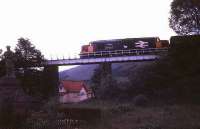
Ian Dinmore 10/08/1987
This lattice girder bridge is just north of the Glenbruar Viaduct, Crianlarich Junction and Crianlarich station on the West Highland Railway. The viaduct crosses the River Fillan and has two spans of 55 ft and four spans of 40 ft.
...
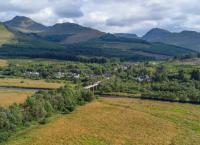
Ewan Crawford 04/08/2022
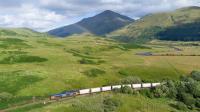
Ewan Crawford 04/08/2022
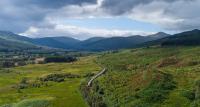
Ewan Crawford 04/08/2022
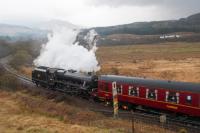
Ewan Crawford 16/04/2019
This is an occupational crossing with the West Highland Railway at Inverhaggernie Farm, which is just to the south. There is a footbridge just to the north west and immediately Inverhaggernie Viaduct.
...
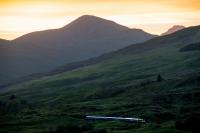
Ewan Crawford 21/06/2019

Ewan Crawford 28/03/2018
This single track girder viaduct, between Crianlarich and Upper Tyndrum, is to the north of Inverhaggernie Farm. It crosses the Inverhaggernie Burn. Just to the south east is a footbridge over the line and, beyond that, Inverhaggernie No 2 Level Crossing.
...
This occupational crossing is north of Kirkton Farm. Auchtertyre Viaduct is to the north west.
...
This is a 300 ft single track lattice girder viaduct on a gentle curve. The viaduct has a 101 ft central span and four 40 ft spans.
...
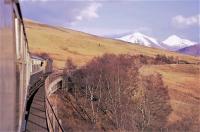
Robin McGregor 31/03/1975

Ewan Crawford 05/03/2020
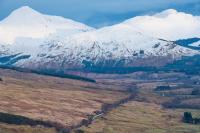
Ewan Crawford 05/03/2020
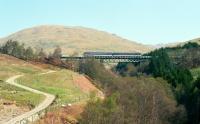
Ewan Crawford //1991
This is an island platform station in the West Highland 'Swiss Chalet' style. The station building, signal box (closed 1984, 'B' listed and restored), stationmaster's cottage and railwaymen's cottage survive. Entry to the station is by a subway. There is a very small parking area. The station is east of Tyndrum, a small settlement at the west end of Strath Fillan. It is high above the village, as ...
More details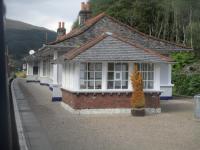
David Bosher 07/09/2022
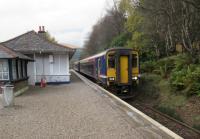
David Panton 31/10/2018
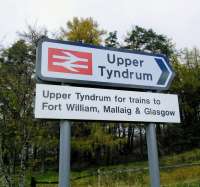
...
David Panton 01/11/2017
This is a summit at 1,024 ft between Tyndrum Upper and Bridge of Orchy.
...

Roger Geach 20/07/1988
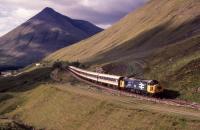
...
John Kirk //
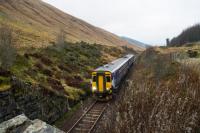
Ewan Crawford 12/12/2018
This is a single track five span girder viaduct of 318 ft on a curve, a viaduct with five 60 ft spans. The viaduct is on the 'Horseshoe Curve', south of Bridge of Orchy and north of County March Summit [West Highland].
...
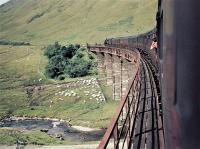
Brian Haslehust 31/08/1961
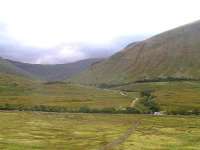
Paul D Kerr 04/09/2006

Ewan Crawford 01/07/2006
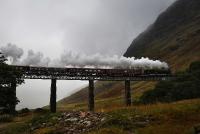
John Gray 27/09/2009
This is a single track girder viaduct on a curve of 576 ft, consisting of nine spans of 60 ft. The viaduct is on the Horseshoe Curve, south of Bridge of Orchy and north of County March Summit [West Highland].
...

John Clark /10/1975
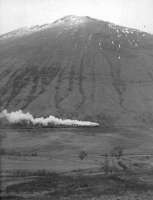
Malcolm McDonald //1960
This is an island platform station in the West Highland Swiss Chalet style. At the south end of the platform is the disused signal box, closed 1985, which is 'B' listed. The station master's house and railwaymen's cottage also survive. Entry to the station is by a subway.
...
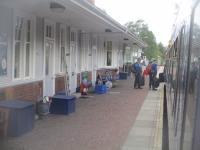
David Bosher 07/09/2022
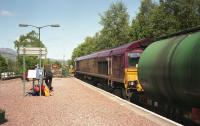
Bill Roberton //2005
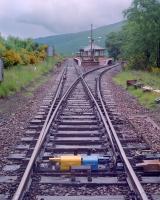
Ewan Crawford //1990
This single track girder viaduct is above Achallader, which is to its north. The viaduct is located between Bridge of Orchy (south west) and Gorton [WHR]. It crosses the Allt Coire Achaladair.
...

Ewan Crawford 25/04/2017
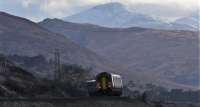
Ewan Crawford 25/04/2017
This viaduct crosses the Allt na Crannaich just west of Crannach Forest between Bridge of Orchy (south west) and Gorton [WHR] (north east).
...
This lineside cottage was south west of the former Gorton [WHR] and south of Gorton Bothy, about midway between the two. The cottage was on the south side of the line. A long distance track passes under the line just to the west of its site.
...

Ewan Crawford 01/08/2021
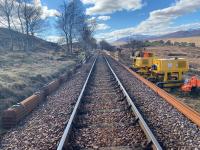
...
Network Rail /04/2022
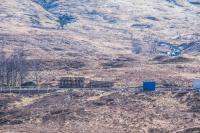
Ewan Crawford 30/03/2022
This former station is now Gorton Crossing (also known as Gorton CE Siding) a passing place on the line with ground frames to operate the points. It is used for engineering trains or machines only. Its location is remote, with no road access, on the southern edge of Rannoch Moor at Tom nam Broc near Gorton Bothy. It was a private station with an island platform.
...
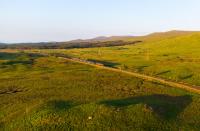
Ewan Crawford 23/06/2023
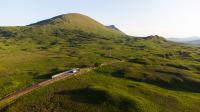
Ewan Crawford 22/06/2023
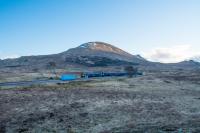
Ewan Crawford 30/03/2022
This is a single track steel single span girder viaduct between Gorton [WHR] (to the south) and Gaur Viaduct (a viaduct south of Rannoch).
...
This is a five girder single track viaduct south of Rannoch station. Also known as Garbh Ghaoir Viaduct. Loch Laidon, to the west, drains east (passing under the viaduct) to Loch Eigheach (Gaur Reservoir) which itself drains to the east to Loch Rannoch.
...
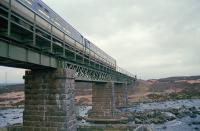
Ewan Crawford 12/04/1997
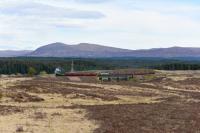
...
John Gray 13/05/2019
This island platform station retains its original building and signal box (closed 1985 and 'B' listed) to the north of the station building. Access is by means of a footbridge, not the original footbridge but a replacement (from Corrour) installed in the 1980s after entry was by means of a pedestrian level crossing to the south end of the platform for several years. Parking is on the east side ...
More details
Mark Bartlett 20/04/2022
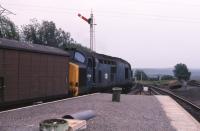
Roger Geach 20/06/1979
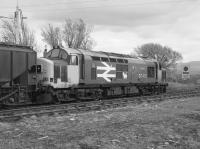
Bill Roberton //1987
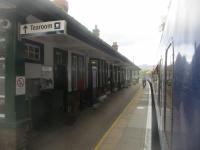
David Bosher 07/09/2022
This is a single track lattice girder viaduct just north of Rannoch station.
...
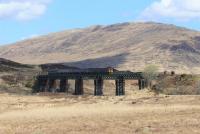
Mark Bartlett 20/04/2022
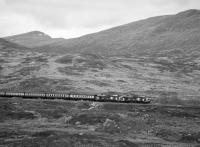
Bill Roberton //1987
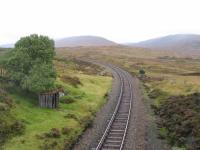
David Spaven 21/09/2017
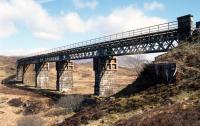
Ewan Crawford //1991
This is deep cutting with a roof to prevent drifting snow from blocking the line.
...
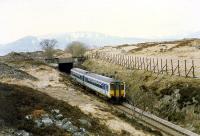
Ewan Crawford //1990
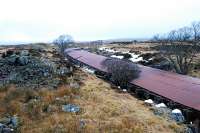
Ewan Crawford 15/02/2010

Ewan Crawford 15/02/2010
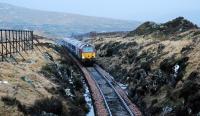
Ewan Crawford 15/02/2010
This small station on the West Highland Railway is only accessible by train, or via a very long private road. In summer the station is a B+B and restaurant Corrour Station House Restaurant . This replaced the former stationmaster's cottage in 1998, which had in any case been altered.
...
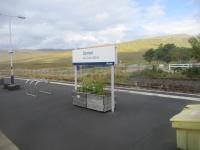
David Bosher 07/09/2022
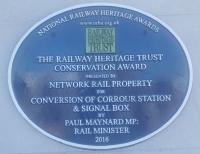
John Yellowlees 19/03/2018
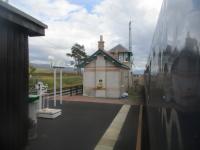
David Bosher 07/09/2022

...
John Yellowlees 01/07/2019
This occupational level crossing is immediately to the north of Corrour station, just south of Corrour Summit.
...
Corrour Summit, 1,350 ft, is immediately north west of Corrour station.
...
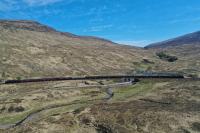
John Gray 15/05/2019
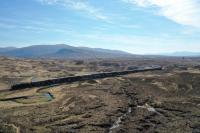
John Gray 15/05/2019

John Gray 15/05/2019
This viaduct is about half way along Loch Treig, it is the largest of the many bridges (and culverts) carrying the line over streams in the area. The line crosses the Allt Coire Mheadhoin / Allt an Dubh-chamais Mòr here. (Just to the north it crosses the Allt an Dubh-chamais Beag.)
...
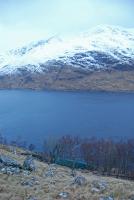
Ewan Crawford 11/02/2013
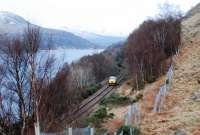
Ewan Crawford 12/02/2013
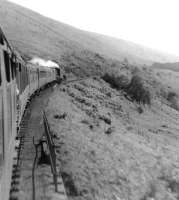
David Stewart 22/05/1961
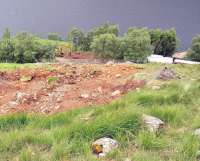
John Gray 04/07/2012
The Ordnance Survey map of 1899 shows a signal box on the west side of the line at a location near (a little to the south of) today's Loch Treig Tunnel but on the original, now flooded, course of the line. The box is shown having signals to both north and south. To its south a lineside cottage is shown.
...
This single platform halt was at the north end of Loch Treig. It had a single platform of 220ft on the esst side of the line. It was a workman's halt built during the construction of Laggan Dam, just to the east, and associated tunnels. The dam is part of the scheme which provides the head of water for electricity generation at the Lochaber Aluminium Works in Fort William. There was a ...
More details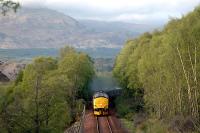
Ewan Crawford 28/05/2006
This siding predated the construction of the Lochaber Aluminium Works and the Lochaber Narrow Gauge Railway. Its original purpose was to serve a gravel pit, located on the east side of the line and served from the north. There was a railway cottage directly east of the line, with the siding to its east.
...
This single track girder viaduct is south east of Tulloch station, the railway crossing over the River Spean downstream of Laggan Dam. It is a three span viaduct on a gentle curve, approximately 170 ft long. The middle girder is the largest, a lattice.
...
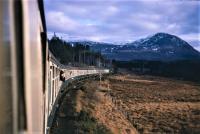
Robin McGregor 05/04/1969
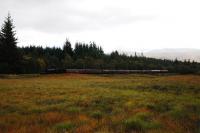
John Gray 26/09/2009
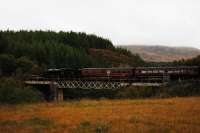
John Gray 26/09/2009
This is a two platform station typical of the northern portion of the West Highland Railway. The main building, on the up (southbound) platform is Swiss Chalet in style. The north side of the building has been modified with the addition of three small wings - two being extensions of gables and the third being wholly new.
...
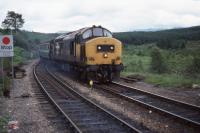
Roger Geach 21/07/1988
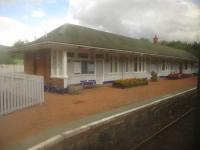
David Bosher 07/09/2022
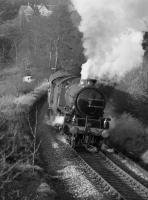
...
Bill Roberton 14/11/1987
This was a two platform station, now reduced to one platform with the loss of the southbound line (the 'up' loop) in 1964. The southbound (up) platform, disused, remains and the site of the station building and goods yard has been built over. These houses are built close to the platform.
...

David Bosher 07/09/2022
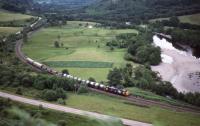
Roger Geach 21/07/1988
This is a two platform station with a passing loop. The main station building on the eastbound platform (for the south), altered at the road side, remains standing. There is a disused signal box ('C' listed) dating from 1949.
...
See also
Invergarry and Fort Augustus Railway
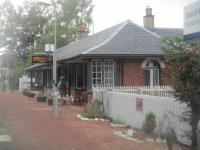
David Bosher 07/09/2022
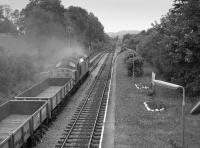
Bill Roberton //1984
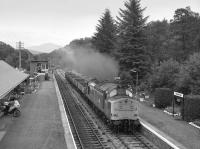
Bill Roberton //1984
This ballast siding was installed in the late period of construction of the line. It was located between Fort William and Spean Bridge at Auchindaul (or Auchnadaull as per contemporary Ordnance Survey maps).
...
See also
Ballast Sidings

Bill Roberton /04/2003
This goods siding was on the west side of the railway at Torlundy, east of Fort William. The siding was approached from the north or Glasgow direction, the approach from the north being due to the railway from Glasgow entering Fort William from the north east after passing Spean Bridge. There was a short loading bank and the line is crossed by a minor road bridge immediately to the south.
...
This is a occupational level crossing for Inverlochy Farm.
...
This distillery is in Fort William at the foot of Ben Nevis. The distillery was formerly railway served.
...
See also
Rail Served Distilleries
This ground frame is north east of Fort William Junction on the route south to Glasgow. It provides access to the aluminium smelter, Lochaber Aluminium Works, by Fort William which is on the south side of the line. The sidings are entered from the west. A short dead end siding provides provides protection against runaway wagons for the line.
...

Roger Geach 14/09/1990
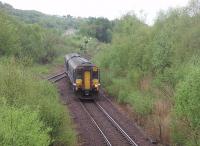
Mark Bartlett 19/05/2010
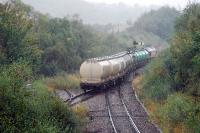
Ewan Crawford 28/09/2009
This is the junction between the Glasgow to Fort William line and the Mallaig Extension (West Highland Railway) (originally the Banavie Branch of the West Highland Railway).
...
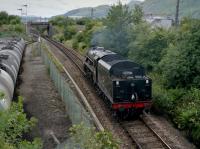
...
Bill Roberton //1984

Mark Wringe 06/07/2016
This disused double track bridge crosses the West Highland Railway directly west of Fort William Junction (and east of the Fort William Oil Sidings). It carried the Lower Works Railway portion of the Lochaber Narrow Gauge Railway. Only one track was laid over the bridge, what would have been the southern of the two tracks.
...
See also
Lochaber Narrow Gauge Railway
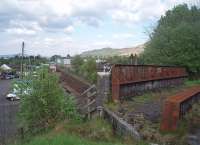
Mark Bartlett 18/05/2010
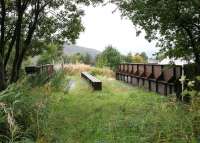
John Furnevel 30/09/2005
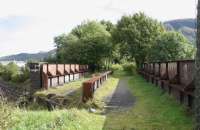
John Furnevel 30/09/2005
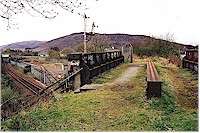
Ewan Crawford //
This distillery was just east of central Fort William, on the north bank of the River Ness. It was served by a short siding from the West Highland Railway. The siding was on the south side of the line and served from the west (by the Nevis Viaduct).
...
See also
Rail Served Distilleries
This is a single track, single span, lattice girder viaduct crossing the River Nevis. It carries the West Highland Railway. It is between Fort William station and Fort William Junction.
...
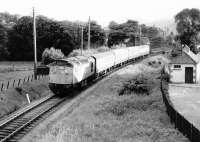
John Furnevel 14/07/1970
This distillery predated the opening of the West Highland Railway. It was located on the north side of the line on the west bank of the River Nevis near the Fort William town centre. The distillery closed around 1908 but remained in use as warehousing for Ben Nevis Distillery. There was a series of buildings.
...
See also
Rail Served Distilleries
This is a terminus with an island platform. The station replaced Fort William [1st] when the line was cut back in 1975. The platform is canopied at the buffer end.
...
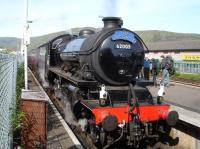
David Pesterfield 20/06/2012
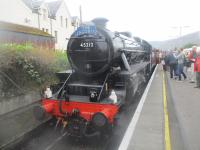
David Bosher 08/09/2022

David Bosher 08/09/2022
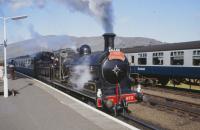
Peter Todd 28/05/1984
This shed was built within the fortifications at Fort William. The loading bank was to the south and south of that the line ran, via a number of loops, to the station.
...
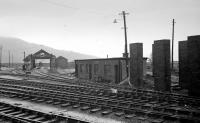
Bill Roberton //1973
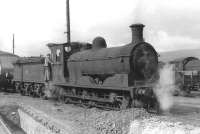
David Stewart 07/09/1961

...
Douglas Blades Collection //1948
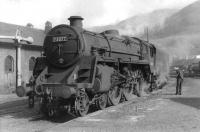
David Stewart 06/09/1961
This goods yard was east of Fort William [1st], terminus of the West Highland Railway. Today it is, approximately, the site of Fort William station.
...
This was a three platform terminus alongside the seafront and steamer pier in Fort William. It was replaced by Fort William when the line was cut back in 1975. Nothing remains of the station and the site is now a dual carriageway. It is ironic that the townsfolk were disappointed the railway separated the town from the beach and now a substantial road does.
...
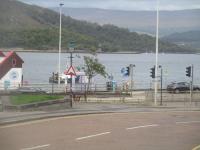
David Bosher 09/09/2022
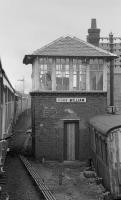
Bill Roberton //1974
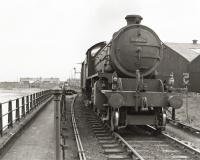
David Murray-Smith 21/03/1961
The West Highland Railway terminated alongside the southern of the two town piers in Fort William, the line running south west from the station alongside Loch Linnhe to reach the pier where there was a loop.
...
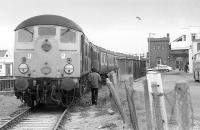
Bill Roberton 04/05/1974
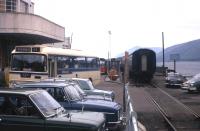
Frank Spaven Collection (Courtesy David Spaven) //1971
Fort William to Banavie
This branch ran from Banavie Junction [1st] in Fort William (and since renamed twice) to Banavie Pier on the Caledonian Canal.
This is the junction between the Glasgow to Fort William line and the Mallaig Extension (West Highland Railway) (originally the Banavie Branch of the West Highland Railway).
...

...
Bill Roberton //1984

Mark Wringe 06/07/2016
A pair of sidings in Fort William are served from the loop on the Mallaig line at Fort William Junction. These oil sidings have seen irregular use with the flow from Grangemouth New Oil Terminal starting and ceasing several times. At present, 2018, the sidings are not used, oil travels by road. ...
More details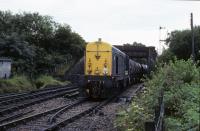
Roger Geach 21/07/1988
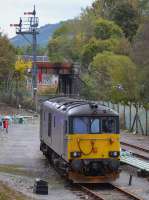
Bill Roberton 20/10/2017
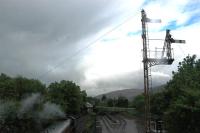
Ewan Crawford 28/05/2006
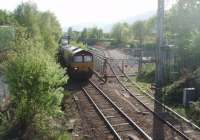
Mark Bartlett 18/05/2010
This yard consists of several looped and single ended sidings on the Mallaig route at Fort William Junction running alongside the loop. There is a turntable and it gives access to Tom-na-Faire Depot. Sometimes referred to as Inverlochy Yard.
...
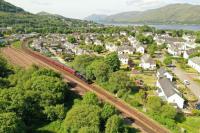
John Gray 08/06/2023
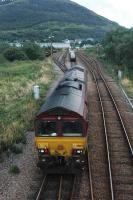
Ewan Crawford //
This footbridge was erected by the British Aluminium Company to give access from the housing at Inverlochy (west) to the Lochaber Aluminium Works (east) over the Mallaig Extension (West Highland Railway).
...
See also
Lochaber Narrow Gauge Railway
This yard and locomotive shed replaced the original Fort William Shed when the line was cut back to the present Fort William station.
...

John Gray 30/06/2021
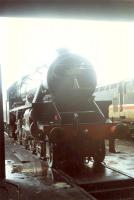
Ewan Crawford //
This is a single track girder viaduct with four 80ft girders crossing the River Lochy just outside Fort William. A footbridge on the side of the viaduct connects Lochyside and Caol on the north bank to Inverlochy on the south bank. The stone piers are castellated to match the nearby Inverlochy Castle.
...
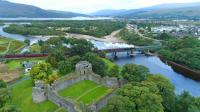
John Gray 08/09/2022
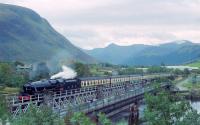
Ewan Crawford //1990
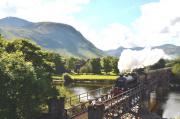
John Gray /06/2012
The signal box here controlled the junction between the Banavie [1st] branch (closed) and the West Highland's extension west to Mallaig (open). Both lines were single track.
...
See also
Mallaig Extension (West Highland Railway)

Ewan Crawford 27/04/2013
This station was the terminus of a short branch built by the West Highland Railway to the Caledonian Canal at Banavie. The branch allowed interchange with the steamers operating on the route to Inverness. The station was intentionally above Neptune's Staircase to minimise the number of locks in the onward journey to Inverness, Muirtown Basin.
...
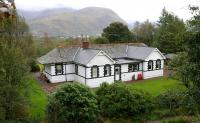
John Furnevel 28/09/2005
Crianlarich Curve
This junction is immediately north of Crianlarich station. Here the the lines to Oban and Fort William separate. The junction faces south. Just to the north, on the Fort William route, is the Glenbruar Viaduct.
...

Bill Roberton //1985

Bill Roberton 19/10/2017

Beth Crawford 05/05/2017

Ewan Crawford //1990
This junction remains open - just. A short somewhat grassy siding runs east.
...
See also
Callander and Oban Railway
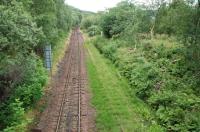
Ewan Crawford 29/07/2016
Lochaber Smelter
This ground frame is north east of Fort William Junction on the route south to Glasgow. It provides access to the aluminium smelter, Lochaber Aluminium Works, by Fort William which is on the south side of the line. The sidings are entered from the west. A short dead end siding provides provides protection against runaway wagons for the line.
...

Roger Geach 14/09/1990

Mark Bartlett 19/05/2010

Ewan Crawford 28/09/2009
This is the only remaining aluminium smelter in the United Kingdom. This smelter was built by contractors Balfour, Beatty & Co Ltd to the east of Fort William, opening in 1929.
...
See also
Lochaber Narrow Gauge Railway
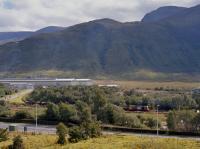
...
Bill Roberton //1986
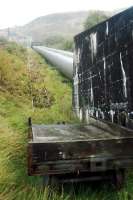
Ewan Crawford //
Books










